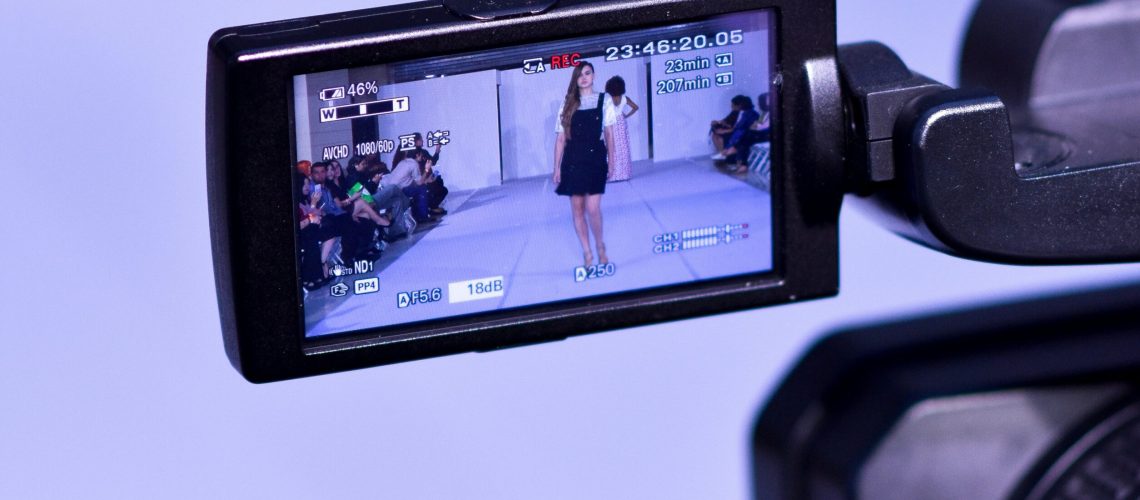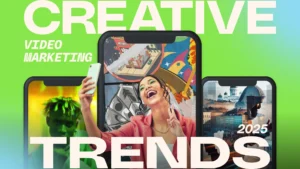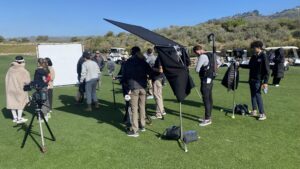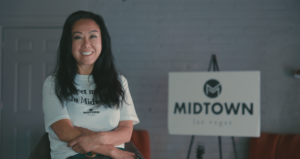Fashion is about more than clothes; it’s about making a statement and telling a story. In today’s fast-paced fashion industry, videography plays a pivotal role in capturing the spectacle of fashion shows. With digital media, fashion shows are no longer exclusive events—they now reach millions worldwide through expertly crafted videos.
At HUSTL Media, we specialize in Las Vegas video production, capturing the essence of fashion shows and turning them into unforgettable visual experiences. With a deep understanding of the industry and a commitment to excellence, we bring fashion to life. This guide explores the art of fashion videography, from essential gear and techniques to the impact of social media. Whether you’re a budding videographer or a seasoned pro, HUSTL Media, a top video production company in Las Vegas, can help you create stunning fashion show videos..
The Evolution of Fashion Videography

Fashion videography has come a long way from its humble beginnings. In the past, fashion shows were primarily documented for archival purposes, with videos serving as simple records of the event. These early recordings were often static, with a single camera capturing the runway from a fixed position. The focus was on the clothes, with little attention given to the atmosphere, energy, or storytelling.
However, as technology advanced and the fashion industry grew, so did the expectations for fashion show videos. The rise of digital media, coupled with the increasing demand for high-quality content, pushed videographers to explore new techniques and tools. Today, fashion videography is a sophisticated art form that combines technical expertise with creative vision.
Modern fashion videos are cinematic, dynamic, and immersive. They don’t just show the clothes; they capture the entire experience—the lights, the music, the emotions, and the narrative. The evolution of fashion videography reflects the industry’s shift towards a more holistic approach to storytelling, where every element of the show is carefully crafted to create a lasting impact on the viewer.
Understanding the Fashion Show Environment
Fashion shows are unique environments that present both challenges and opportunities for videographers. Unlike controlled studio settings, fashion shows are live events where anything can happen, and there’s no room for error. To capture the essence of a fashion show, a videographer must be prepared to navigate a complex landscape of lighting, stage design, and audience dynamics.
Lighting
Lighting is one of the most critical factors in fashion videography. Runway lighting is designed to highlight the garments and models, often using a combination of spotlights, floodlights, and colored gels. However, the lighting setup can be challenging to work with, as it may create harsh shadows, overexposed areas, or rapidly changing light conditions. Videographers must be skilled in adjusting camera settings on the fly, using tools like exposure compensation and dynamic range to ensure that the video captures the true colors and textures of the garments.
Stage Design
Stage design plays a significant role in the visual appeal of a fashion show. From minimalist runways to elaborate sets, the stage design sets the tone for the event. Videographers must consider the stage layout when planning their shots, ensuring that they capture the full scope of the design while focusing on the models. The use of wide-angle lenses and strategic camera placements can help in capturing the grandeur of the stage.
Audience Dynamics
The energy of the audience is a vital part of the fashion show experience. Capturing audience reactions, applause, and interactions can add depth to the video, making the viewer feel as if they are part of the event. However, videographers must also be mindful of audience behavior, as enthusiastic spectators may block camera views or cause distractions. Anticipating these dynamics and positioning cameras accordingly can help in capturing uninterrupted footage.
By understanding and adapting to the unique environment of a fashion show, videographers can create videos that truly reflect the energy, excitement, and artistry of the event.
Essential Equipment for Fashion Videography
High-quality fashion show videos require the right equipment. The choice of gear can significantly impact the final product, from capturing crisp images to ensuring smooth motion. Here’s a breakdown of essential equipment for mastering fashion videography.
Cameras
The camera is the heart of any video production, and for fashion videography, it’s crucial to use a camera that offers high resolution, excellent low-light performance, and fast autofocus. Full-frame mirrorless cameras like the Sony A7S III or the Canon EOS R5 are popular choices for fashion videographers. These cameras provide 4K or higher resolution, wide dynamic range, and the ability to shoot in challenging lighting conditions.
Lenses
Lenses are just as important as the camera itself. A versatile lens kit allows videographers to capture a variety of shots, from wide angles to close-ups. For runway shows, zoom lenses like the Sony 24-70mm f/2.8 GM II or the Canon 70-200mm f/2.8L IS III USM are ideal, offering flexibility to adjust framing quickly. Prime lenses, such as the Canon 50mm f/1.2L or the Sony 85mm f/1.4 GM, are excellent for capturing detail and creating a cinematic depth of field.
Stabilizers
Fashion shows are dynamic events, and smooth camera movement is essential for creating professional-looking videos. Stabilizers, such as gimbals like the DJI Ronin-S or the Zhiyun Crane 3S, help achieve fluid motion, whether tracking models down the runway or capturing sweeping shots of the venue. For static shots, tripods with fluid heads, like the Manfrotto 502, provide stability while allowing for smooth pans and tilts.
Audio Equipment
While fashion shows are primarily visual experiences, audio still plays a crucial role, especially during interviews or behind-the-scenes footage. A high-quality shotgun microphone, such as the Rode NTG5, mounted on the camera or a boom pole, ensures clear audio capture. For interviews, wireless lavalier microphones, like the Sennheiser EW 112P G4, provide discreet and reliable sound recording.
Lighting Equipment
In cases where the available lighting is insufficient, additional lighting equipment can help enhance the video quality. Portable LED lights like the Aputure Amaran series offer adjustable brightness and color temperature, making them ideal for illuminating models or adding fill light to dark areas. For more creative effects, RGB lights can add color accents or mood lighting to the scene.
Investing in high-quality equipment is essential for achieving professional results in fashion videography. Each piece of gear plays a specific role in capturing the details, atmosphere, and energy of a fashion show.
Techniques for Capturing the Runway Experience

Capturing the runway experience requires a combination of technical skill and creative vision. The goal is not just to record the event but to tell a story through visuals that resonate with the audience. Here are some expert techniques for filming fashion shows.
Camera Angles
Choosing the right camera angles is crucial for showcasing both the models and the garments. A low-angle shot can make the models appear taller and more imposing, adding drama to their walk. A high-angle shot, on the other hand, can provide an overview of the runway and the audience. Side angles are useful for capturing the movement and flow of the garments, while close-ups focus on details like fabric texture, accessories, and makeup.
Movement
Dynamic camera movement adds energy and excitement to fashion show videos. Tracking shots, where the camera follows the model down the runway, create a sense of continuity and involvement. Panning shots can capture the full length of the runway, showing multiple models in a single frame. Using a gimbal or a steadicam ensures that these movements are smooth and cinematic.
Framing
Framing is key to guiding the viewer’s attention. The rule of thirds is a common technique in fashion videography, where the subject is placed off-center, creating a more balanced and aesthetically pleasing composition. For runway shows, it’s important to leave enough headroom and avoid cutting off the model’s feet, as this can disrupt the flow of the video.
Highlighting Garments and Models
The main focus of any fashion show is the garments and the models wearing them. Ensure that the camera captures the details of the clothing, such as embroidery, stitching, and fabric movement. Slow-motion shots can be particularly effective in emphasizing the fluidity and elegance of the garments. At the same time, capturing the expressions and poses of the models adds personality and character to the video.
Storytelling Through Visuals
Fashion shows are not just about clothes; they are about telling a story. Each collection has a theme, and the video should reflect that narrative. This can be achieved through careful shot selection, pacing, and editing. For example, a collection inspired by nature might include close-ups of organic textures, flowing fabric, and natural light, while a futuristic collection might feature sharp cuts, metallic colors, and dynamic camera angles.
By mastering these techniques, videographers can create fashion show videos that are not only visually stunning but also deeply engaging, drawing the viewer into the world of fashion.
Post-Production: Crafting the Final Product
The post-production phase is where the magic happens. It’s during this stage that raw footage is transformed into a polished, cohesive video that tells a compelling story. Here’s an overview of the key aspects of post-production in fashion videography.
Editing
Editing is the backbone of post-production. It involves selecting the best shots, arranging them in a logical sequence, and trimming excess footage. The goal is to create a smooth flow that maintains the viewer’s interest from start to finish. Non-linear editing software like Adobe Premiere Pro or Final Cut Pro X offers powerful tools for organizing and editing footage, allowing for precise control over every aspect of the video.
Color Grading
Color grading is a crucial step in enhancing the visual appeal of a fashion video. By adjusting the colors, contrast, and brightness, videographers can create a specific mood or aesthetic that aligns with the theme of the fashion show. For example, a vintage-inspired collection might benefit from warm, sepia tones, while a high-tech collection could use cooler, more metallic hues. Software like DaVinci Resolve provides advanced color grading tools for achieving professional-grade results.
Sound Design
Sound design is often overlooked in fashion videography, but it plays a vital role in creating an immersive experience. The right soundtrack can elevate a video, adding emotion and rhythm to the visuals. In addition to music, sound effects like footsteps, fabric rustling, or audience applause can enhance the realism of the video. Mixing and balancing audio levels ensures that the sound complements the visuals without overpowering them.
Integration of Music
Music is a powerful tool in fashion videography, helping to set the tone and pace of the video. Whether it’s a pulsating beat for a high-energy collection or a soft melody for an elegant runway, the choice of music should align with the theme of the show. It’s important to obtain the necessary licenses for commercial use of music or to use royalty-free tracks. Syncing the music with the visuals, particularly during key moments like model entrances or outfit reveals, adds impact to the video.
Creating a Cohesive Narrative
The final step in post-production is to ensure that the video tells a cohesive story. This involves reviewing the entire video, making sure that the transitions are smooth, the pacing is consistent, and the overall narrative is clear. Title cards, lower thirds, and other graphical elements can be added to provide context, such as the name of the collection, the designer, or the models. The goal is to create a video that not only showcases the fashion but also engages and resonates with the audience.
The Role of Social Media in Fashion Videography
Social media has revolutionized the way fashion videos are consumed. Platforms like Instagram, TikTok, and YouTube have become essential channels for sharing fashion content, reaching a global audience in real-time. For videographers, understanding the nuances of each platform is key to maximizing the impact of their videos.
Instagram is a visual-first platform, making it ideal for fashion content. Fashion show videos on Instagram should be concise, visually striking, and optimized for mobile viewing. Vertical videos or square formats work best on this platform. Instagram Stories and Reels offer opportunities for behind-the-scenes content, quick highlights, and interactive features like polls and Q&A sessions.
TikTok
TikTok’s short-form, looping video format is perfect for capturing the energy and excitement of fashion shows. Creative editing, transitions, and effects can make fashion videos stand out on this platform. The use of trending sounds and hashtags can increase visibility and engagement. Given TikTok’s algorithm, videos that quickly capture attention and encourage interaction are more likely to go viral.
YouTube
YouTube is the go-to platform for longer-form content. Full-length fashion show videos, behind-the-scenes documentaries, and in-depth interviews with designers can all find a home on YouTube. The platform’s search functionality and recommendations algorithm also help in reaching a wider audience. High-quality production values are important on YouTube, as viewers expect polished and professional content.
Engaging with Audiences
Engagement is key to success on social media. Responding to comments, asking for feedback, and encouraging viewers to share content can help build a loyal following. Collaborating with influencers, fashion bloggers, and other creators can also amplify reach and credibility. Consistency in posting and maintaining a cohesive brand aesthetic across platforms further enhances the impact of fashion videography.
By leveraging the power of social media, videographers can extend the reach of their fashion show videos, creating a lasting impression on a global audience.
Tips for Collaborating with Fashion Designers and Brands
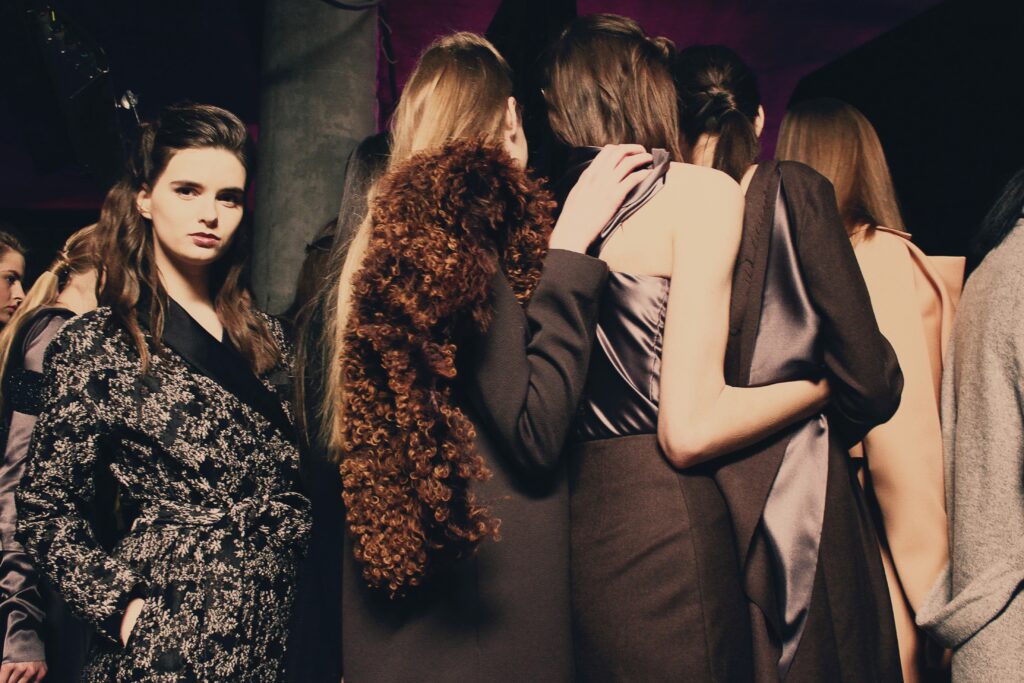
Successful fashion videography requires more than just technical skills; it also involves effective collaboration with fashion designers and brands. Here are some tips for building strong working relationships and producing impactful video content.
Communication is Key
Clear and open communication is essential from the start. Discuss the designer’s vision, the theme of the collection, and any specific requirements or preferences they may have. Understanding their goals and expectations will help in aligning the video production with their creative vision.
Understand the Brand
Every fashion brand has its own identity, values, and target audience. Take the time to research the brand and understand its aesthetic and messaging. This knowledge will inform the style and tone of the video, ensuring that it resonates with the brand’s audience.
Be Flexible and Adaptable
Fashion shows are dynamic events, and things don’t always go according to plan. Being flexible and adaptable is crucial in fashion videography. Whether it’s adjusting to last-minute changes in the show or finding creative solutions to unexpected challenges, being able to think on your feet will help in delivering a successful video.
Align Creative Goals
Collaboration is a two-way street. While it’s important to respect the designer’s vision, it’s also essential to bring your own creative ideas to the table. Discuss and align your creative goals with the designer or brand, finding a balance between their expectations and your artistic vision. This collaborative approach often leads to more innovative and impactful video content.
Provide Value Beyond the Video
Finally, consider how you can add value beyond just producing the video. This could include offering social media strategy advice, creating additional content like teasers or behind-the-scenes clips, or providing insights into video marketing trends. By positioning yourself as a valuable partner, you can build long-term relationships with designers and brands.
Conclusion
Mastering fashion videography goes beyond capturing beautiful visuals—it’s about telling a compelling story, evoking emotion, and creating an unforgettable experience. From understanding the unique challenges of fashion show environments to choosing the right gear, every detail contributes to the final product.
At HUSTL Media, a leading video production company in Las Vegas, we push the boundaries of creativity and technical excellence. Whether you’re a budding videographer or an experienced professional, there’s always room to grow in this dynamic field.
As the fashion industry evolves, so too does videography. By staying ahead of trends and embracing new technologies, videographers can continue to deliver unforgettable fashion experiences. HUSTL Media, with our expertise in Las Vegas video production, ensures your fashion show videos make a lasting impact on audiences worldwide.
To book our services, kindly send us an email at Art@HUSTLMedia.com or directly call us at (702) 980 -9620. You may also learn more about us and our campaigns by visiting our website – HUSTL Media.

